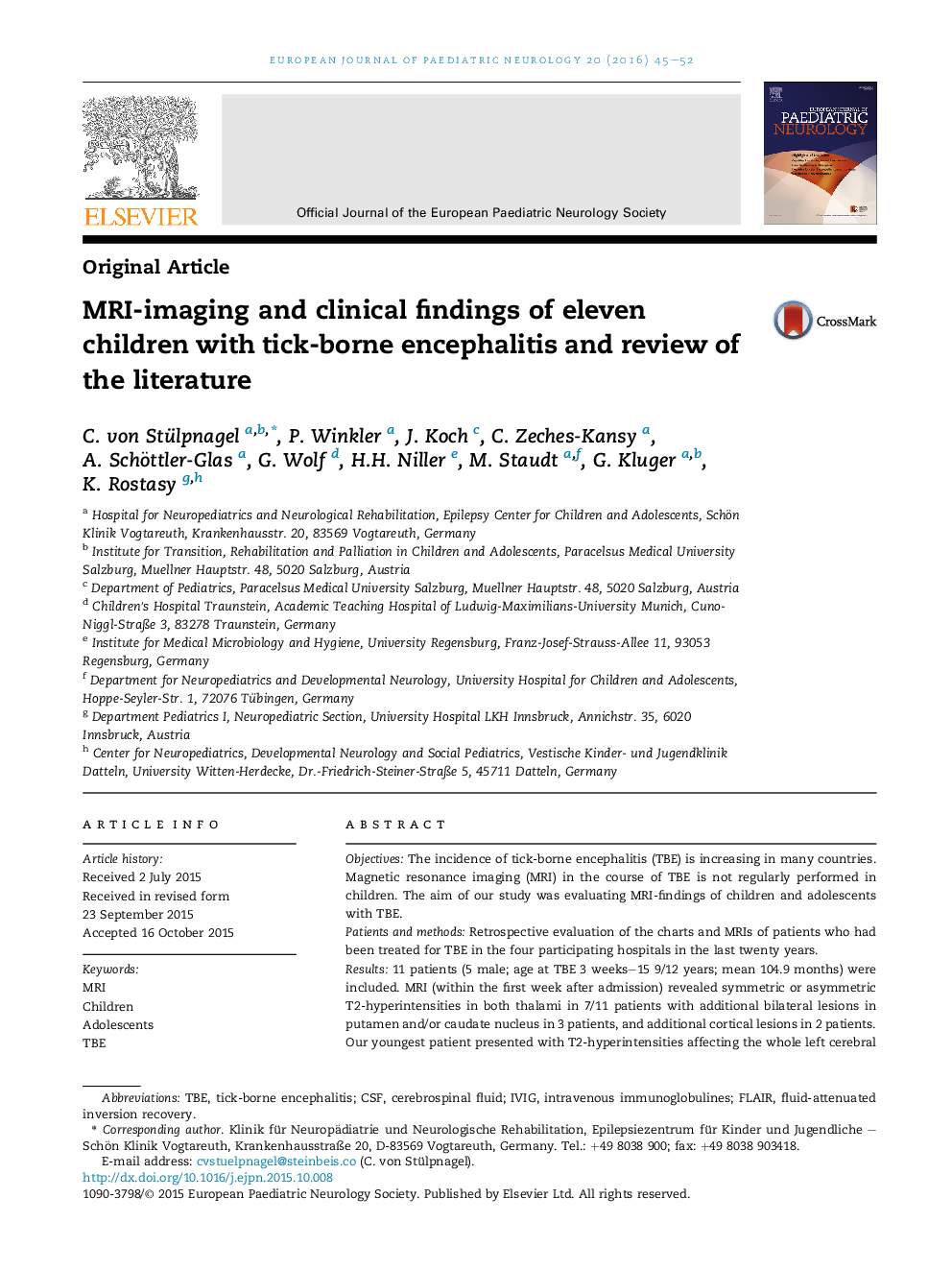| کد مقاله | کد نشریه | سال انتشار | مقاله انگلیسی | نسخه تمام متن |
|---|---|---|---|---|
| 3053656 | 1580009 | 2016 | 8 صفحه PDF | دانلود رایگان |
• MRI in tick-borne encephalitis (TBE) is not regularly performed in children.
• Retrospective evaluation: 11 patients' MRIs (5 male; age at TBE 1/12y–15 9/12 years).
• MRI: 7/11 symmetric or asymmetric T2-hyperintensities in both thalami.
• 4/11 patients had complete neurological recovery (2/4 with normal MRI).
• TBE differential diagnosis in meningoencephalitis + bilateral thalamic involvement.
ObjectivesThe incidence of tick-borne encephalitis (TBE) is increasing in many countries. Magnetic resonance imaging (MRI) in the course of TBE is not regularly performed in children. The aim of our study was evaluating MRI-findings of children and adolescents with TBE.Patients and methodsRetrospective evaluation of the charts and MRIs of patients who had been treated for TBE in the four participating hospitals in the last twenty years.Results11 patients (5 male; age at TBE 3 weeks–15 9/12 years; mean 104.9 months) were included. MRI (within the first week after admission) revealed symmetric or asymmetric T2-hyperintensities in both thalami in 7/11 patients with additional bilateral lesions in putamen and/or caudate nucleus in 3 patients, and additional cortical lesions in 2 patients. Our youngest patient presented with T2-hyperintensities affecting the whole left cerebral hemisphere including white and grey matter and both cerebellar hemispheres. One patient had a minimal reversible T2-hyperintensity in the splenium of the corpus callosum (RHSCC). 3/11 patients had a normal MRI. 4/11 patients showed complete neurological recovery (2/4 with a normal MRI, RHSCC patient). 6/11 children survived with significant sequelae: hemiparesis (n = 4); cognitive deficits (n = 4); pharmacoresistant epilepsy (n = 2). One patient died of a malignant brain edema.DiscussionA spectrum of MRI findings can be found in children with TBE, often showing involvement of the subcortical deep grey matter structures. In children presenting with a meningoencephalitis and bilateral thalamic involvement TBE should be included in the differential diagnosis.
Journal: European Journal of Paediatric Neurology - Volume 20, Issue 1, January 2016, Pages 45–52
